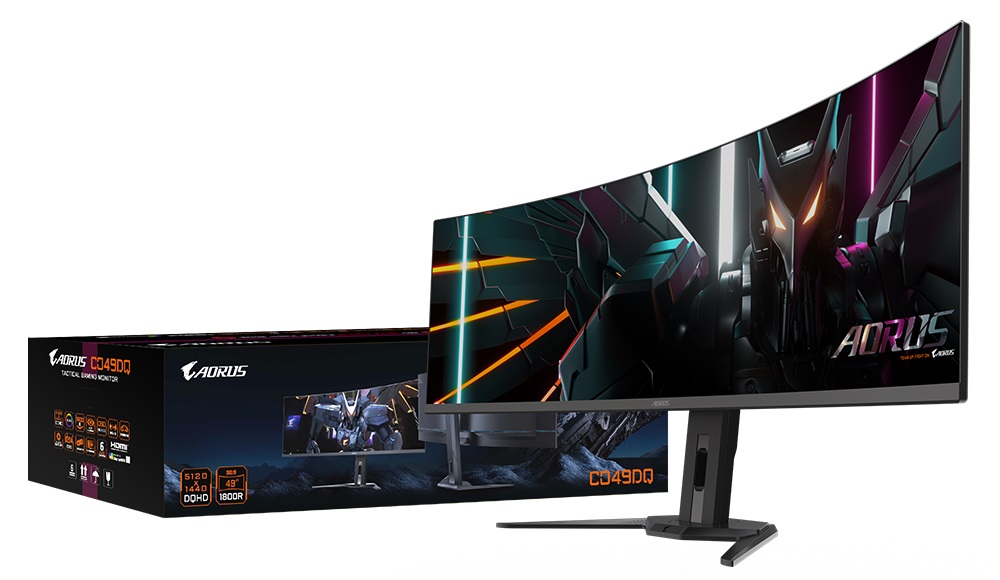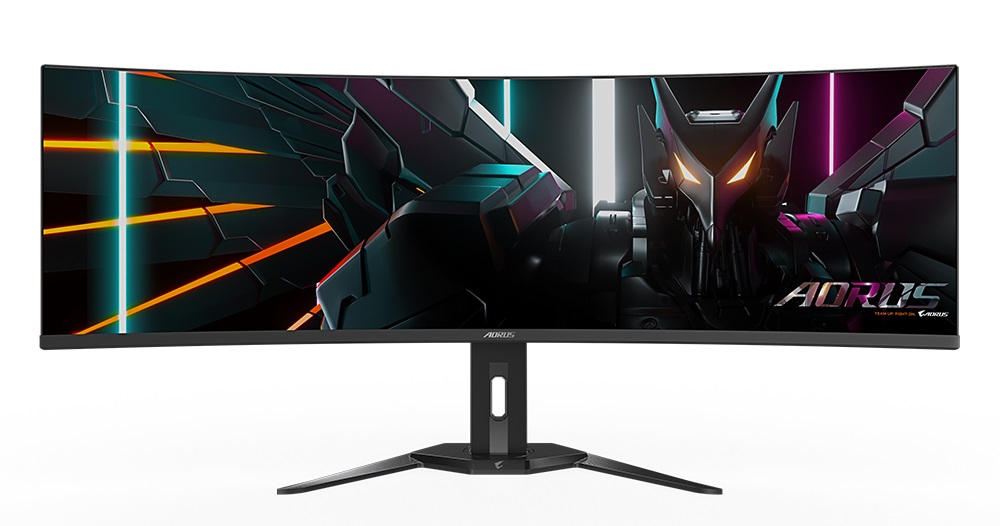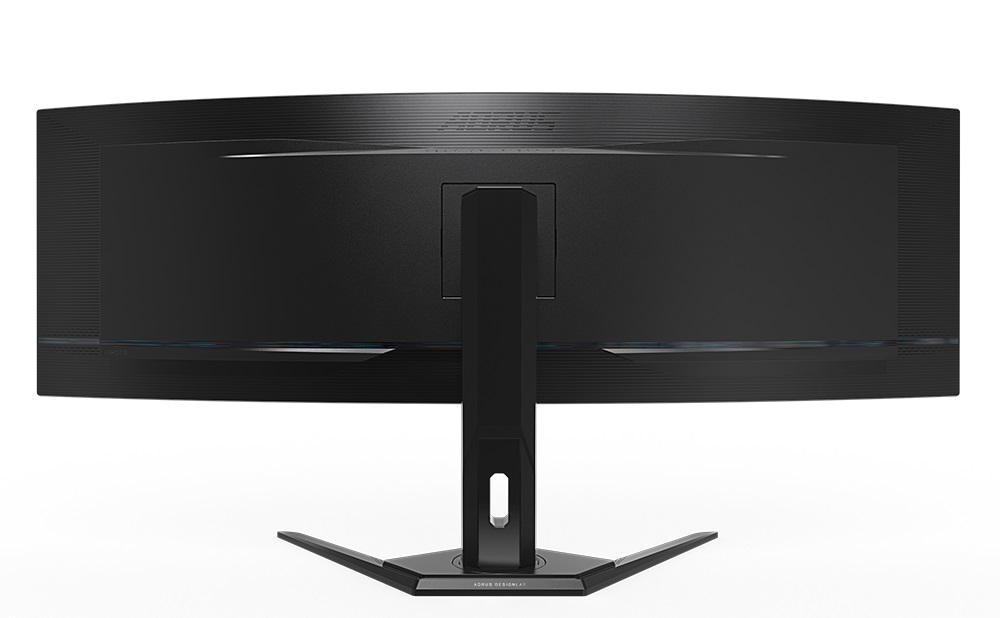
Gigabyte has launched the Aorus CO49DQ Gaming Monitor. Highlights of this new super ultra-wide display include its 49-inch QD-OLED panel, with a DQHD 5120 x 1440 pixels resolution, and an 1800R curvature. Gamers may also appreciate its 144 Hz refresh rate, 0.03 ms g2g response time, and gaming 'tactical features'.
As well as the gaming-friendly features, the Aorus CO49DQ is pitched as a good fit for multi-tasking and content creation tasks. Productivity use cases mentioned by Gigabyte include film editing and music editing. For some of those tasks, a monitor may need good color specs and this QD-OLED screen has 10-bit color, a 99% DCI-P3 gamut, and is certified for VESA DisplayHDR True Black 400. Some will also appreciate the eye-comfort of the non-glare panel. Multi-tasking is embraced by the monitor providing both picture-in-picture (PiP) and picture-by-picture (PbP) modes.



AI for Burn-In Prevention?
The word 'AI' is a new buzzword and we'll see a lot of it used either as a genuine innovation and expansion, or just a marketing term for functions that have little to do with machine learning. Aorus claims to use an AI-based algorithm to minimize the risk of burn-in issues by using a series of OLED protection technologies described as 'OLED Care' functionality. In the manual, the OSD shows options like Care+, usage time, pixel clean, static control, pixel shift, APL stabilize, and sub-logo Dim.
I am intrigued to know if it uses an AI algorithm to minimize this lingering issue with OLED panels - and how it functions irrespective of the fact. One might be more optimistic about its real-world performance, once it has been put through third-party burn-in torture tests with these functions enabled.
It is nice to have burn-in protection features that work, AI or otherwise. It is also good to see companies mentioning the warranty period and assuring burn-in issue is covered, like how LG and Corsair do on their respective websites. I am sure many would agree this is a piece of necessary information, especially with OLED monitors. I couldn't get any information about this monitor's warranty period- either on the website, the specs, or the manual and there's no downloadable warranty card. Here's hoping Gigabyte will be clear about its warranty period shortly.
I/O and Other Features
For input, the Aorus CO49DQ has two HDMI 2.1 ports with CEC support and a DisplayPort 1.4 with HBR3 for video input. Meanwhile, a DP-Alt with 18w PD USB Type-C and two Type-A USB 3.2 pass-throughs is enabled through the USB 3.2 Type-B upstream connector. There is a headphone jack, and two 5W speakers are present.
For ergonomics it has swivel and tilt adjustment, but no height adjustment. There is an option to get a third-party arm or desk mount as this monitor provides a 100 x 100 VESA mounting.
Gigabyte regularly provides KVM features in many of its monitors by default and the CO49DQ is no different. This is a useful feature that justifies a certain premium since people like to swap between their desktop, mobile phone, and laptop if and when needed using the aforementioned PiP and PbP modes. The power supply is built-in, unlike many monitors that usually come with a power brick. It is rated to consume a maximum of 72 watts.
The rest of the features are typical of modern Aorus gaming monitors - OSD Sidekick, Black Equalizer, Dashboard, Crosshair, Timer, Counter, firmware auto-update, and others.
The State of DQHD QD-OLED Monitors
It seems that we'll see plenty of 49-inch QD-OLED monitors with 1800R with DHQD 5120 x 1440 resolution, and a 144Hz refresh rate in 2024. The Aorus CO49DQ, MSI MPG 491CQP, and the RedMagic Realm seem to all be based on the same (Samsung) panel, and we could see more.







